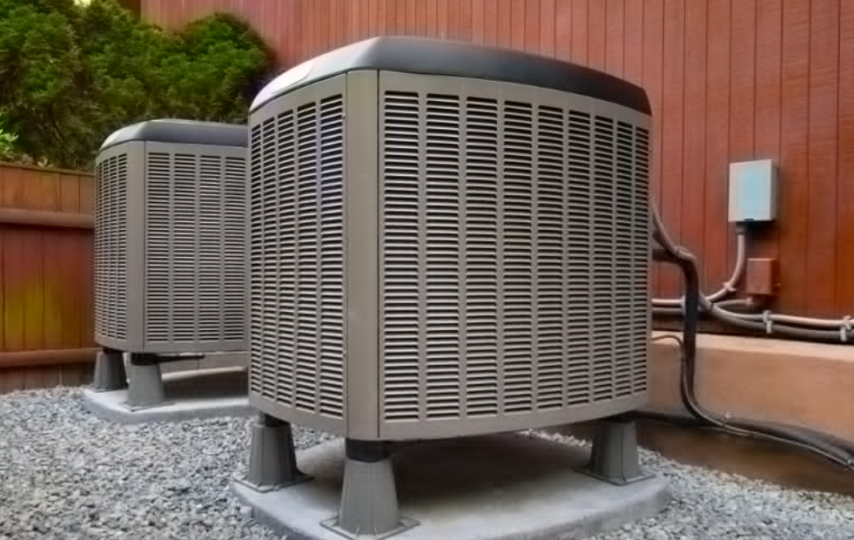Ensuring your home is equipped with a reliable heating, ventilation, and air conditioning (HVAC) system is essential for maintaining comfort and indoor air quality year-round. However, upgrading or replacing an HVAC system can be a significant investment.
In this comprehensive guide, we’ll explore the intricacies of planning your HVAC upgrade budget, including assessing your needs, setting a realistic budget, exploring financing options, and implementing cost-saving strategies. By following these steps, you can make informed decisions that enhance your home’s comfort, energy efficiency, and overall value.
Assess Your HVAC Needs
Before embarking on any HVAC upgrade project, it’s important to conduct a thorough assessment of your current system’s performance and identify any shortcomings or areas for improvement. This assessment involves several key steps to ensure that you make informed decisions about the scope and requirements of your upgrade.
1. Evaluate Current System Performance
Start by assessing how well your existing HVAC system is meeting your home’s heating and cooling needs. Consider factors such as temperature consistency, indoor air quality, and energy efficiency. Note any areas of discomfort or inefficiency, such as rooms that are consistently too hot or too cold or excessive energy consumption.
2. Consider Age and Condition
Determine the age and condition of your HVAC equipment, including the furnace, air conditioner, heat pump, and ductwork. HVAC systems typically have a lifespan of 10-15 years, depending on usage and maintenance. Older systems may be less efficient and more prone to breakdowns, making them prime candidates for replacement.
3. Assess Energy Efficiency
Evaluate the energy efficiency of your current HVAC equipment by examining its Seasonal Energy Efficiency Ratio (SEER) or Annual Fuel Utilization Efficiency (AFUE) ratings. Higher SEER or AFUE ratings indicate greater energy efficiency and lower operating costs. If your equipment has low-efficiency ratings, upgrading to newer, more efficient models can lead to significant energy savings over time.
4. Review Repair History
Take note of any past repairs or maintenance issues with your HVAC system. Frequent breakdowns, costly repairs, or ongoing maintenance requirements may indicate underlying problems or inefficiencies that could be addressed through an upgrade. Consider the cumulative costs of repairs versus the upfront investment in a new, more reliable system.
5. Identify Comfort Preferences and Health Concerns
Consider any specific comfort preferences or health concerns that may influence your HVAC upgrade decisions. For example, if you or your family members suffer from allergies or respiratory issues, you may prioritize upgrades that improve indoor air quality, such as installing a high-efficiency air filtration system or duct cleaning. Similarly, if you have rooms that are consistently too humid or too dry, you may opt for humidity control solutions to enhance comfort.
By conducting a comprehensive assessment of your HVAC needs, you can identify the most pressing issues and priorities for your upgrade project. This information will serve as the foundation for developing a customized upgrade plan that addresses your home’s specific requirements and ensures optimal comfort, efficiency, and indoor air quality.
Set Your Budget
Once you have a clear understanding of your HVAC needs, it’s time to establish a realistic budget for your upgrade project. Begin by determining how much you can afford to spend based on your financial situation and available funds. Take into account the estimated costs of equipment, installation, permits, and any necessary modifications to your home’s infrastructure. It’s essential to leave room in your budget for unexpected expenses that may arise during the upgrade process, such as unforeseen repairs or compliance with building codes.
Explore Financing Options
With your budget in mind, explore various financing options available to help fund your HVAC upgrade. Traditional financing routes, such as personal loans or home equity loans, offer flexibility but may come with higher interest rates. Alternatively, look for government incentives and rebates available for energy-efficient upgrades, which can help offset upfront costs and improve your return on investment. Many HVAC companies also offer customer financing, providing a convenient way to spread out payments over time without straining your budget.
Cost-Saving Strategies
Incorporating cost-saving strategies into your HVAC upgrade plan can help maximize your budget and long-term savings. Consider opting for energy-efficient equipment with high Seasonal Energy Efficiency Ratio (SEER) ratings and ENERGY STAR certification, which can significantly reduce your home’s energy consumption and utility bills. Additionally, explore opportunities for rebates, tax credits, or other financial incentives available for installing energy-efficient HVAC systems. You may also be able to save money by performing some installation tasks yourself or by bundling multiple upgrades into a single project to take advantage of economies of scale.
Tips for Negotiating and Saving
When shopping for HVAC upgrades, don’t hesitate to negotiate with contractors to get the best possible deal. Obtain multiple quotes from reputable HVAC companies and compare prices, warranties, and services offered. Be wary of contractors who offer significantly lower prices than their competitors, as this may indicate subpar equipment or workmanship. Look for contractors who are licensed, insured, and experienced in installing the type of equipment you’re considering. Additionally, inquire about any seasonal discounts, promotions, or financing incentives that may be available to help lower your overall costs.
Planning for the Future
As you finalize your HVAC upgrade budget, consider the long-term implications of your investment. Factor in potential energy savings and return on investment over the lifespan of your new system. Budget for ongoing maintenance and repairs to keep your HVAC system running smoothly and efficiently. Additionally, think about future upgrades or expansions you may want to incorporate into your plans to ensure scalability and flexibility as your home’s heating and cooling needs evolve. By taking a proactive approach to planning and budgeting for your HVAC upgrade, you can make informed decisions that improve your home’s comfort, efficiency, and value for years to come.
Final Thoughts
Planning your HVAC upgrade budget requires careful consideration, strategic decision-making, and thorough research. By assessing your needs, setting a realistic budget, exploring financing options, and implementing cost-saving strategies, you can ensure a successful upgrade project that enhances your home’s comfort, energy efficiency, and overall value. Remember to prioritize quality, reliability, and long-term savings when selecting equipment and contractors for your HVAC upgrade. With proper planning and financial management, you can enjoy improved comfort and peace of mind in your home for years to come.










